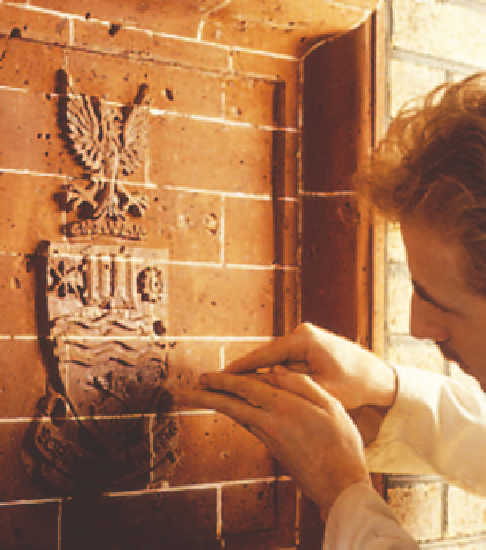Agriculture Reference
In-Depth Information
requiring over-cleaning in an attempt to draw off and remove the lime residue
from the brick faces. As a result of this practice, once the brickwork has dried-
out, a haze of 'lime bloom' appears over the work as the calcium hydroxide is
drawn forward during the full drying-out process and is deposited on the face
of the new gauged work; which gradually carbonates and forms calcium carbon-
ate. The use of this method of finishing gauged work should be prohibited.
In recent years when it is desired to have an element of gauged work that
is carved, it is usually done by a carver at the bench with best prepared rub-
bers dry-bonded and clamped, to permit carving; which is often executed with
powered carving tools such as the 'Dremel'™ range. The completed carving is
then carefully packed and delivered to site where it is laid in a lime putty: silver
sand mortar as described above. Occasionally, however, there is a call for
in situ
carved gauged work when this is the case the bricks are squared and then cut
to size as ashlared units to suit the bonding of the feature (Fig. 158).
The object then is to build a panel, or what is termed a 'lump', set with full
flush joints in a special mortar made from a mixture of finely sifted crushed
chalk or whiting and patent knotting; the use of white lead, as a toxic material,
being prohibited. This is prepared and used in small amounts as it soon begins to
stiffen. It is mixed to a fully integrated paste-like consistency and trowel-applied
as a thin 'butter joint' on dusted clean and dampened rubbers, being carefully
applied to fill all relevant bedding faces then quickly laid to position. Such joints
Figure 158
The Bedford College
Coat of Arms, being
in situ
carved by the
Author on to a panel of
rubbing bricks setting in
whiting and knotting in
1989. (Courtesy of Ian
Parry)

